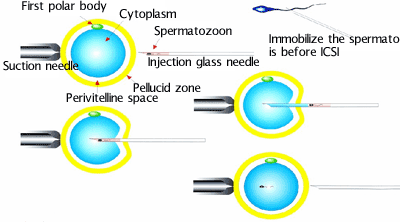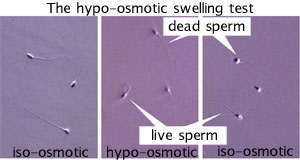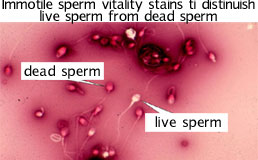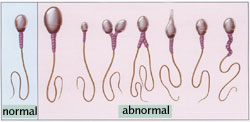
Typical Treatment
– ICSI
Intra Cytoplasmic Sperm Injection (ICSI)
Intra Cytoplasmic Sperm Injection (ICSI) is a technique that involves selecting the best sperm and then injecting it into an egg. Unlike with In Vitro Fertilization, where we waited for the sperm to fertilize the egg after they were both placed in the same laboratory dish, in the case of ICSI a microscope is used to help direct an injection needle into the cytoplasm of each individual egg so that an individual sperm can be injected to fertilize the egg. The resulting fertilized eggs (embryos) are then placed back inside the woman’s uterus.

Patients
This treatment is very effective for those patients who fall into one of the following conditions.
Severe case of Oligozoospermia, Asthenozoospermia or Immotile sperm Teratozoospermia.
In Vitro Fertilization with normal sperm and eggs has been unsuccessful even after many attempts.
Immotile Sperm
In completely immotile sperm, some are alive. We can distinguish live sperm your from deed one with vitality stains.
Line sperm is not dyed and looks white. In a hypo-osmotic solution, live sperm will absorb fluid, resulting in curling of the tail. So even if sperm is immotile, conception possible after ICSI using a live sperm. And many normal babies are born.


Teratozoospermie
 Different types of sperm malformations, megalo head, pin head, double heads, double tails, elongated head, and amorphous head are found. Abnormal sperm with malformed head cannot be fertilized with eggs. However abnormal sperm with deformed tail has a chance to be fertilized as much as normal sperm.
Different types of sperm malformations, megalo head, pin head, double heads, double tails, elongated head, and amorphous head are found. Abnormal sperm with malformed head cannot be fertilized with eggs. However abnormal sperm with deformed tail has a chance to be fertilized as much as normal sperm.
